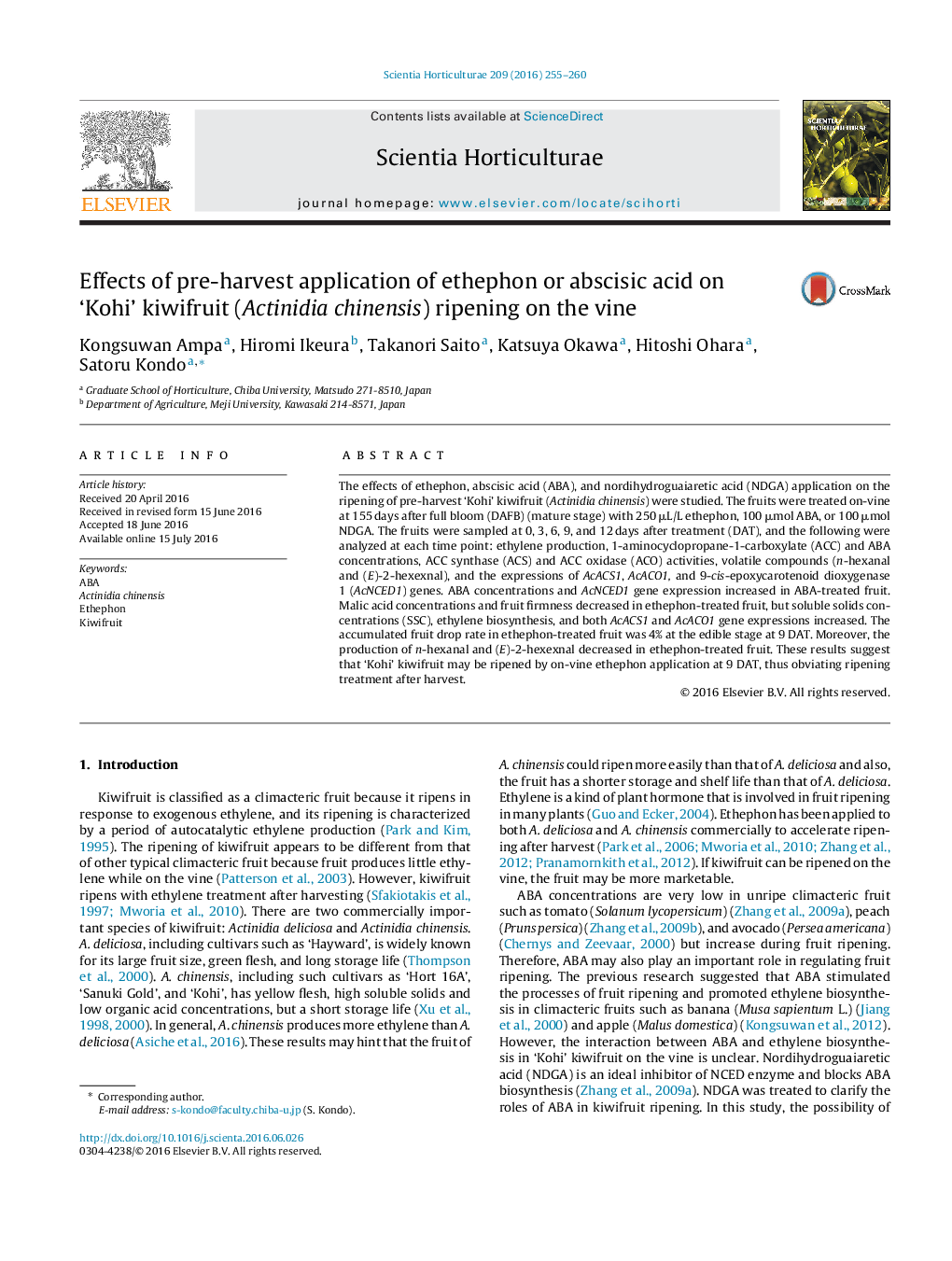| Article ID | Journal | Published Year | Pages | File Type |
|---|---|---|---|---|
| 4565977 | Scientia Horticulturae | 2016 | 6 Pages |
•The effects of ethephon, abscisic acid (ABA), and nordihydroguaiaretic acid (NDGA) application on the ripening of pre-harvest ‘Kohi’ kiwifruit (Actinidia chinensis) were studied.•Only 4% fruit dropped to 9 DAT when fruit reached an edible condition, although it is significantly higher than other treatments.•‘Kohi’ kiwifruit may be ripened by on-vine ethephon application at 9 DAT, thus obviating ripening treatment after harvest.
The effects of ethephon, abscisic acid (ABA), and nordihydroguaiaretic acid (NDGA) application on the ripening of pre-harvest ‘Kohi’ kiwifruit (Actinidia chinensis) were studied. The fruits were treated on-vine at 155 days after full bloom (DAFB) (mature stage) with 250 μL/L ethephon, 100 μmol ABA, or 100 μmol NDGA. The fruits were sampled at 0, 3, 6, 9, and 12 days after treatment (DAT), and the following were analyzed at each time point: ethylene production, 1-aminocyclopropane-1-carboxylate (ACC) and ABA concentrations, ACC synthase (ACS) and ACC oxidase (ACO) activities, volatile compounds (n-hexanal and (E)-2-hexexnal), and the expressions of AcACS1, AcACO1, and 9-cis-epoxycarotenoid dioxygenase 1 (AcNCED1) genes. ABA concentrations and AcNCED1 gene expression increased in ABA-treated fruit. Malic acid concentrations and fruit firmness decreased in ethephon-treated fruit, but soluble solids concentrations (SSC), ethylene biosynthesis, and both AcACS1 and AcACO1 gene expressions increased. The accumulated fruit drop rate in ethephon-treated fruit was 4% at the edible stage at 9 DAT. Moreover, the production of n-hexanal and (E)-2-hexexnal decreased in ethephon-treated fruit. These results suggest that ‘Kohi’ kiwifruit may be ripened by on-vine ethephon application at 9 DAT, thus obviating ripening treatment after harvest.
